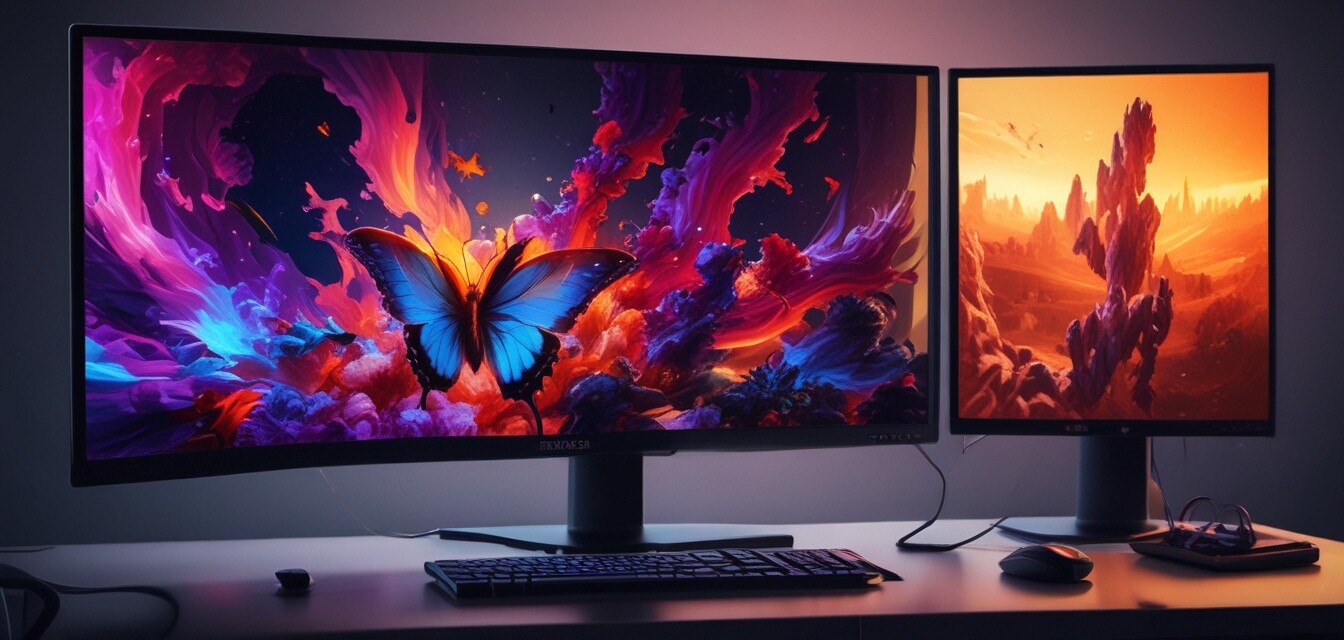
OLED Monitors: Best Choices for Simulation Games
Key Takeaways
- OLED monitors offer superior color accuracy and contrast, enhancing immersive gaming experiences.
- Response times are critical for simulation games, ensuring smooth transitions and reducing lag.
- Features like G-Sync and FreeSync help in eliminating screen tearing for a better gaming experience.
- Consider screen size and resolution when choosing the best OLED monitor for simulation games.
- Explore different categories like 4K OLED Gaming Monitors and G-Sync & FreeSync OLED Monitors for more options.
As simulation games continue to grow in complexity and graphical fidelity, the choice of monitor can significantly affect the gaming experience. OLED monitors stand out in this respect, delivering exceptional image quality and performance. In this article, we will compare some of the leading OLED monitors available for simulation games, focusing on their visual fidelity, responsiveness, and features that create incredibly realistic experiences.
What to look for in an OLED monitor for simulation games
When selecting an OLED monitor for simulation games, consider these crucial factors:
- Visual Fidelity: Look for monitors with high resolution and color accuracy.
- Response Time: A lower response time is preferable for minimizing motion blur.
- Refresh Rate: Higher refresh rates (120Hz or more) can enhance gameplay fluidity.
- Adaptive Sync Technology: Features such as G-Sync or FreeSync help eliminate tearing.
- Screen Size and Resolution: Ensure the size and resolution suit your gaming setup and preferences.
Top OLED Monitors for Simulation Games
| Monitor Model | Screen Size | Resolution | Refresh Rate | Response Time | Adaptive Sync |
|---|---|---|---|---|---|
| Monitor 1 | 27" | 3840 x 2160 (4K) | 144Hz | 1ms | G-Sync |
| Monitor 2 | 32" | 2560 x 1440 (QHD) | 165Hz | 2ms | FreeSync |
| Monitor 3 | 34" | 3440 x 1440 (Ultrawide) | 120Hz | 1ms | G-Sync & FreeSync |
| Monitor 4 | 24" | 1920 x 1080 (Full HD) | 240Hz | 0.5ms | FreeSync |
Visual performance in multiplayer simulation games
Visual performance can drastically enhance the enjoyment of multiplayer simulation games. With OLED technology, gamers experience the following advantages:
- Deep Blacks: OLED monitors produce deep black levels, enhancing contrast and detail.
- Vivid Colors: The wide color gamut allows for more vibrant visuals.
- Fast Response Times: Essential for action-packed gameplay to reduce ghosting.
Buying considerations for OLED monitors
When making a purchase, it’s essential to consider several aspects before finalizing your choice. Here’s a checklist:
- Budget: OLED monitors can be pricier; set a budget based on your gaming needs.
- Warranty: Check the warranty options available for peace of mind.
- Reviews: Look for customer reviews or product comparisons to inform your decision.
- Brand Reputation: Choose reputable brands known for quality and reliability.
- User Experience: Ensure the monitor ergonomics fit your gaming setup.
- For additional tips, view our Buying Guides section.
Conclusion
Choosing the right OLED monitor for simulation games involves understanding your needs and preferences. Key aspects like visual fidelity, response time, and additional features play significant roles in enhancing your gaming experiences. By considering the factors outlined in this article and reviewing your options, you can find a monitor that truly elevates your gaming sessions.
Pros
- Excellent picture quality with vibrant colors
- Fast response times minimize lag
- Adaptive sync technology improves performance
- Flexible sizes and resolutions to choose from
Cons
- Usually more expensive than LED monitors
- Limited availability in certain resolutions
- Risk of burn-in with static images
For further reading, explore our News and Trends section to stay updated with the latest in OLED technology.